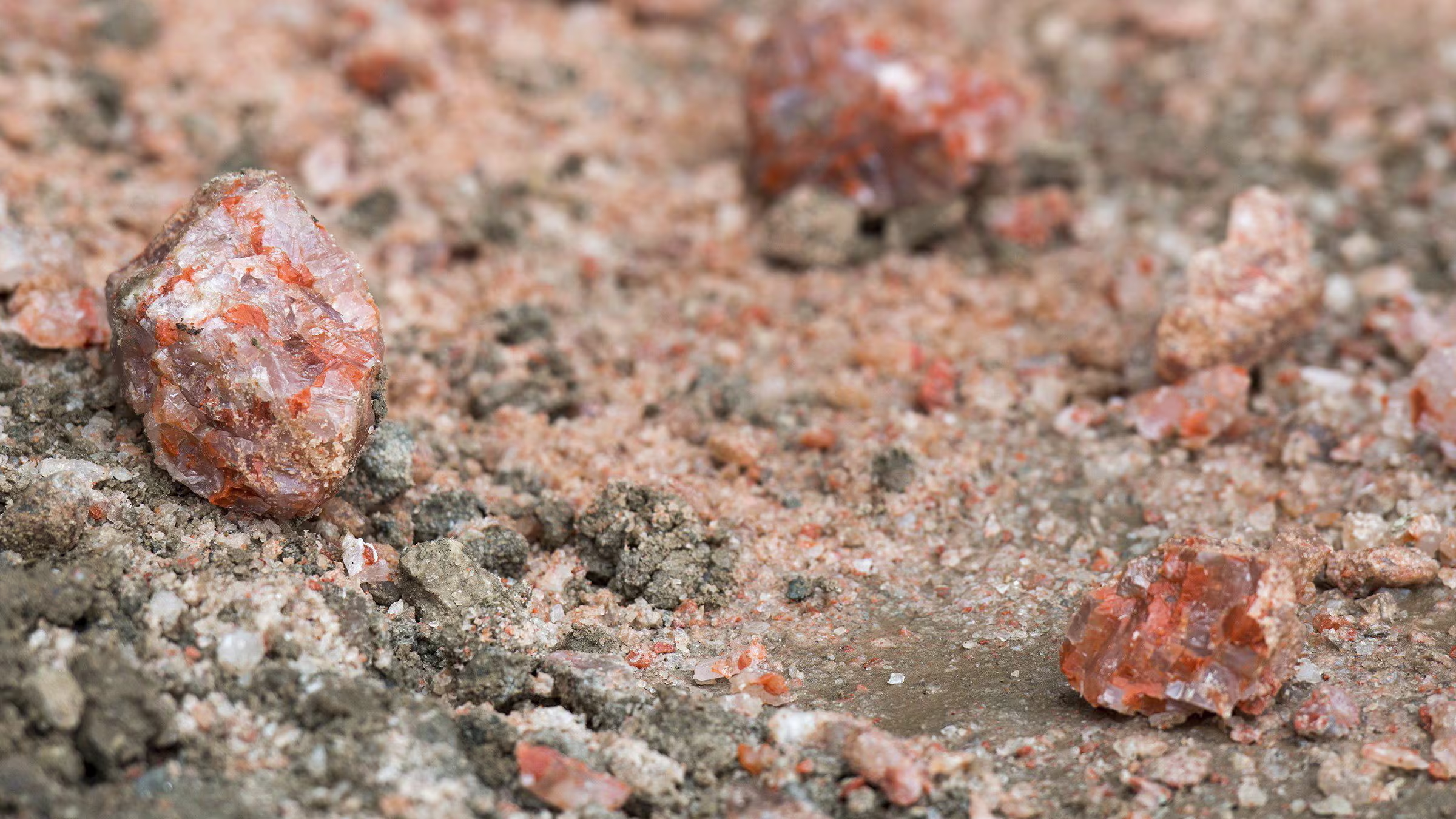Critical minerals have become a point of tension between Canada and the U.S. amid an ongoing trade dispute and the resources, which are used to power modern economies, are essential to Canada’s national security, according to experts.
Last week, Prime Minister Justin Trudeau informed a group of executives that U.S. President Donald Trump wasn’t joking about the annexation of Canada, citing critical minerals as a reason.
Following Trump’s election in November, he stated Canada could avoid tariffs by becoming the 51st state.
On Feb. 1, Trump imposed 25 per cent tariffs on most goods imported from Canada into the U.S. and placed a 10 per cent tariff on energy and resources, including uranium and certain critical minerals, according to Canadian business law firm Stikeman Elliott.
On Monday, 25 per cent tariffs were placed on steel and aluminum, with the White House saying tariffs on those imports would be stacked on top of other levies.
What are critical minerals?
The Critical Minerals Centre of Excellence sets out criteria for what a critical mineral is and says to be considered a critical mineral, the supply chain must be threatened and a there needs to be “reasonable chance” for the mineral to be produced in Canada.
It also says the material must either be essential to Canada’s national or economic security, be needed for the transition to a low-carbon digital economy or position Canada as a sustainable strategic partner within the global supply chain.
“As the world moves toward adopting these technologies with even more frequency, demand for critical minerals is skyrocketing,” a spokesperson for Natural Resources Canada said in a statement to BNNBloomberg.ca Thursday.
The spokesperson added that investing in critical minerals creates economic growth while positioning Canada as a leader in energy, mining, national security and the modern economy.
“At the same time, Canada’s sustainable mining development practices ensure long-term environmental and social benefits,” the statement reads.
The centre defines 34 minerals and metals as critical
| Aluminum | Antimony | Bismuth | Cesium |
| Chromium | Cobalt | Copper | Fluorspar |
| Gallium | Germanium | Graphite | Helium |
| High-purity iron ore | Indium | Lithium | Magnesium |
| Manganese | Molybdenum | Nickel | Niobium |
| Phosphorus | Platinum group metals | Potash | Rare earth elements |
| Scandium | Silicon metal | Tantalum | Tellurium |
| Tin | Titanium | Tungsten | Uranium |
| Vanadium | Zinc |
What are critical minerals worth?
According to the International Energy Agency (IEA), demand for critical minerals is expected to expand as more clean technologies are adopted. The IEA says the aggregate market value of key energy transition minerals is around US$325 billion.
If countries around the world fully implement energy and climate pledges that have been announced, the IEA expects demand for critical minerals for clean energy to more than double by 2030 and triple by 2040 hitting nearly 35 million tonnes each year.
TD Economics said in a June report that critical minerals will have a “crucial role” in powering technologies needed to decarbonize, while Canada has significant reserves of these materials.
“We estimate the potential gross value at a minimum of $300 billion just for six priority critical minerals cited in provincial, territorial, and federal strategy documents,” the report reads.
“Developing these resources alone will contribute over $500 billion in GDP (gross domestic product) over the life of these potential mines and can help support economic reconciliation with Indigenous communities across the country.”
What are the most important critical minerals in Canada?
Natural Resources Canada said that six of Canada’s 34 critical minerals are prioritized for “their distinct potential to spur Canadian economy growth.”
Those six include lithium, graphite, nickel, cobalt, copper and rare earths.
Tom Timmins, the leader of Gowling WLG’s energy group, told BNNBloomberg.ca in a statement Tuesday that certain critical minerals are essential for strategic manufacturing, including cobalt, nickel, copper, rare earth elements, graphite and manganese.
“Many of these are sourced from a limited number of geographic locations, particularly for high-quality deposits, making them ‘strategic minerals’ due to potential supply chain disruption risks,” he said.
Timmins said Canada is a “global leader in critical minerals production.”
This includes potash from Saskatchewan, which he said is used as fertilizer, niobium in Quebec, which is used to make steel alloys and MRI magnets as well as uranium from Saskatchewan, which is used for nuclear energy.

Where are critical minerals found?
Natural Resources Canada says critical mineral mines, smelters, refineries or advanced projects are located in nearly every Canadian province and territory.
The Critical Minerals Centre of Excellence lists the development of critical minerals across the country.
- Alberta: lithium, nickel, cobalt and titanium
- British Columbia: molybdenum, niobium, aluminum, copper, zinc, bismuth, indium and germanium
- Manitoba: nickel, copper and cobalt
- New Brunswick: tungsten and molybdenum
- Newfoundland and Labrador: rare earth elements, nickel, cobalt, antimony and fluorspar
- The Northwest Territories: rare earth elements, cobalt, bismuth, and copper
- Nova Scotia: tin, copper and zinc
- Nunavut: copper, nickel, cobalt, and platinum group metals
- Ontario: chromium, graphite, nickel, cobalt, and platinum group metals
- Quebec: lithium, magnesium, rare earth elements, graphite, nickel, cobalt, platinum group metals, vanadium, molybdenum, niobium, scandium and aluminum
- Saskatchewan: uranium, potash and helium
- Yukon: zinc, copper and tungsten
Why are critical minerals so valuable and what are they used for?
The Critical Minerals Centre of Excellence says critical minerals are the “foundation on which modern technology is built”.
They are used across a variety of essential products like mobile phones, electric vehicle (EV) batteries, medical devices, solar cells, catalytic converters, semiconductors, fiber optics, renewable energy technologies and in defence applications, according to experts.
“Without them, work arounds would need to be developed for industry applications, and it is possible that certain types of products would become unavailable,” said Timmins.
A House Natural Resources Committee Report on critical minerals notes that Canada is the only western nation that has all the minerals and metals required to make advanced batteries for EVs.
Why does the U.S. want access?
Tim Pickering, the founder and president of the Auspice Capital Advisors, said in an interview with BNNBloomberg.ca Tuesday that there is interdependence between Canada and the U.S. on critical mineral supply chains, as the U.S. wants to source those materials domestically or from allied nations.
Pickering said Canada is a major producer of critical minerals, which see high demand for use in renewables.
He says the U.S. wants these resources because it needs them in its supply chain where it might have previously sourced those items from other nations like Russia and China.
“Ultimately, they want to secure friendly supply chains…And when you get to the U.S. military, seeking domestic or allied mineral supply chains and avoiding reliance on these potential adversaries (it) is a no brainer,” he said.
Meanwhile Timmins notes that the U.S. “already has full and ready access to Canadian resources” through a complex and cost competitive supply chain that is stable and reliable.
He added that tariffs have “complicated the discussion,” saying a trade war “could be the silliest thing I’ve ever seen,” and they could add regulatory and administrative burdens to trade.
Over the short term, he said the changes are likely to disrupt existing supply networks and “throttle” early-stage investments in critical mineral mining and processing in both countries.
Additionally, Timmins said tariffs could “force Canadian suppliers to look at markets outside North America”, which would drive up costs “across virtually every single industry.”
Some energy investors say Trump’s move to lower initial tariff threats on raw materials acknowledges the reliance by the U.S. on Canadian resources.


